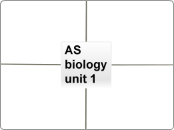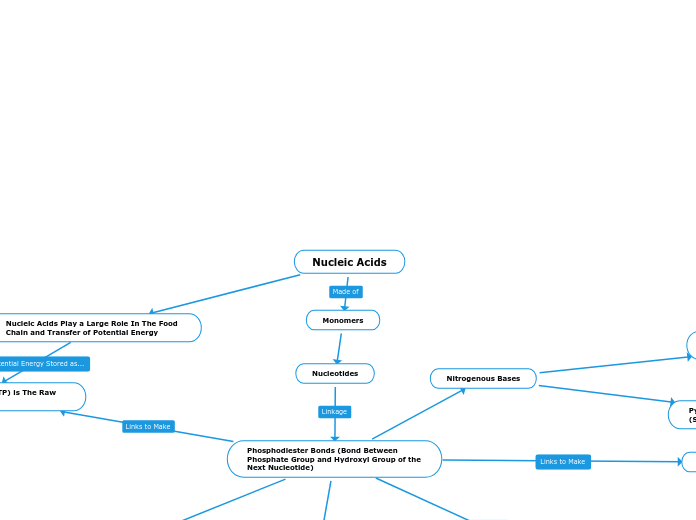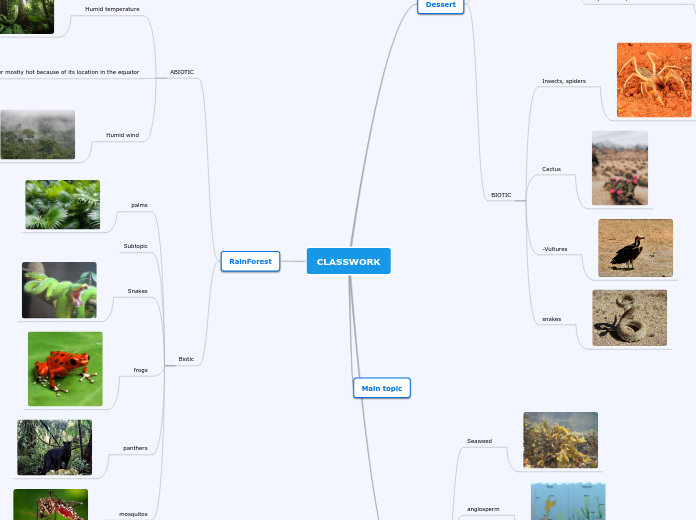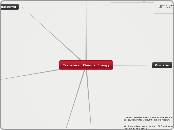AS biology unit 1
Immunity
Defense mechanism
Non-specific
Immediate respomse and the same for all pathogen
Specific
Slower response and specific to each pathogen
Humoral reponse
Humoral response
Involves antibodies
B cells take up antigens of invading pathogen and display them on the cell surface membrane
T helper cells help B cells to divide mitotically into plasma and memory cells
Plasma cells- secrete antibodies
Memory cells- provide a quicker immune response upon second exposure
Antibodies
Proteins produced by the lymphocytes in response to a specific antigen
Monoclonal antibodies
Used in
Seperation of chemicals
Cancer treatment
Transplant surgery
Vaccination
Must
Be able to be stored
Have few side effects
Be economically available
Problems
Many different strains of the same virus
Pathogen may mutate frequently
Disease may develop shortly after vaccination has been given
Active
Antibodies made by the body in response to an antigen
Passive
Antibodies given to you
T cells and cell mediates immunity
Lymphocytes
A type of white blood cell responsible for the immune response
T Lymphocytes
Associated with cell mediated immunity
Responds to foreign material inside body cells
B lymphocytes
Associated with humoral immunity
Produces antibodies
Responds to foreign material outside body cells
Cell mediated response
Pathogen is engulfed by phagocytosis
Phagocytes places pathogen on cell surface membrane
Receptors on T helper cell fit onto antigens
Activate T cells divide by mitosis into
Memory cells
B cells
Phagocytosis
1.Phagocyte attracted to bacteria by recognising antigens on bacteria as foreign
2.Engulf bacteria;
3.Bacteria in vesicle;
4.Lysosome fuses with enzymes into vacuole;
5.Bacteria digested
Cells and movement in and out of them
Lipids
Fats and oils make up triglycerides
Each fatty acid forms a bond with glycerol in a condensation reaction
When hydorlysed triglycerides produce glycerol and three fatty acids
Hydrophillic head: Attracts water
Hydrophobic tail: Repels water
Fatty acid replaced by phosphate group
Role
Main role in plasma membrane
Provide flexibility of membrane
Transfer lipid soluble substsances
Energy source
Protection
Transport
Active transport
The movement of ions and molecules from a region of low concentration to high concentration using energy
Active process
Requires energy
Carreier proteins are required for the ions and molecules to pass through
Osmosis
Water potential is the pressure created by the water molecules
The greater the number of water molecules, the higher the water potential
The movement of water from a high water potential to a low water potential
Diffusion
The movement of particles from an are of high conencentration to an area of low concentration
Facilitated Diffusion
Passive process
Down a concentration gradient
Occurs in plasma membranes
Protein channels allow water soluble molecules to pass through
Absorption in the small intestine
Villi and Microvilli
Glucose is absorbed through thte walls
Increases surface area
Increases rate of absorption
Villi sistuated between lumen
Co-transport
1. Sodium ions actively transported out of epithelial cells by sodium pottasium pump
2. Higher concentration in lumen than inside epithelial cell
3. Sodium ions diffuse down concentration gradient through protein carriers
4. Sodium ions flood back, coupled with glucose, into cell
5.Glucose passes through blood plasma by facilitated diffusion using another protein carrier
Efficiency
Able to move
Maintain concentration gradient
Increase surface area
Very thin
Short diffusion pathway
Cholera
1. When cholera reaches the small intestines, they use their flagella to propel themselves to the mucus lining of the small intestine
2. Produce toxins which enter the epithelial cells causing ion channels to open
3. This causes chloride ions to flood into the lumen
4. Loss of chloride ions un epithelial cells raises water potenita; and causes an increase in chloride ions in the lumen nwhich lowers the water potential
Oral rehydration therapy
Ingredients
Water-Rehydrate tissues
Sodium- Replace ions lost
Glucose- Stimulate uptake of ions
Pottasium-Replace ions lost
Why water isnt helpful
Water is not absorbed by the intestines
It doesnt replace ions that are lost
Cell-surface membrane
Phospoholipids
Hydrophillic head pointing inwards interacting with water in cytoplasm
Hydrophobic tail pointing out avoiding interaction with water
Function is to allow lipid souble substances to enter and leave the cell
Fluid mosaic model
Fluid- Phospholipids can freely move
Mosaic- Proteins varies in shape, size and pattern
Cells
Ribosomes
Site of protein synthesis
Endoplasmic reticulum
Smooth ER
Tubular
Synthesise,store and transport lipids and carbohydrates
Rough ER
Ribosomes present on outer surface
Provide large surface area for protein synthesis
Golgi apparatus
compact and consists of stacks of membranes
Lysosomes
Contain enzymes which break down material ingested by phagocyte cells
Release enzymes outside of the cell
Digest worn out organelles
Nucleus
Nuclear envelope- Controls entry and exists of material in and out of cell
Nuclear pores- Passage of large molecules
Nucleouls- Makes up nucleus, makes ribosomes
Chromatin-DNA
Controls cell activity
Mitochondria
Double mebrane-control entry and exits
Cristae-increases surface area
Microscopy
cell fractionation
The process where cells are broken up and the organelles are seperated
Cold- reduce enzyme activity
Isotonic- prevent organelles bursting.shrinking
Buffer- maintain a constant pH
Ultarcentrifugation
Fragments are centrifuged which spins the tubes at very high speeds in order to create a centrifugal force
Homogenation
Cells are broken up by a blender releaseing organelles from the cells
Fluid is filtered to remove any complete cells or large pieces
Transmission electron microscope
Produces a 2-D image
Staining is required
Specimen must be thin
Resolution
MInimum distance 2 objectrs need to be in order to appear sepearte items
Greater resolution means greater clarity, image produced is clearer and more precise
Scanning electron microscope
Produces a 3-D image
Low resolving power
Enzymes and the digestive system
Saccharides
Carbohydrates
Made up of chains of monomers
Repeated chains are called polymers
Carbohydrates are made up of carbon, oxygen,hydrogen and nitrogen
Disaccharides
Monosaccharide's join together in condensation reactions to form disaccharides which are help together by Glycosidic bonds
Glucose and glucose gives you maltose
Glucose and fructose gives you sucrose
Glucose and Galactose gives you lactose
Digestive system
Oesophagus
Carries food from the mouth to the stomach
Stomach
A muscular sac that produces enzymes
It stores and digest food
Small inntestine
Long muscular tube
Food is further digested by enzymes
Inner wall is folded into villi which provide a large surface area
Large intestine
Absorbs water
Water that is reabsorbed comes from secretion of many digestive glands
This is why food becomes drier and thicker in consistency and forms faeces
Salivary gland
Secretes enzymes like amylase which breaks down starch into maltose
Breakdown
Lactose intolerance
Reduction of lactase can cause lactose intolerance as the person is unable to digest all the lactose they consume
When the lactose reaches the large intestine, it gets broken down however forms a large volume of gas which results in nausea, bloating, diarrhoea and cramps
Physical
Large food molecules are broken down into smaller pieces by the teeth. This allows ingestion and provides a large surface area for chemical digestion
Chemical
Breaks down large insoluble molecules into smaller soluble ones using enzymes. The enzymes hydrolyse (split the molecules using water) the food molecules.
Once hydrolysed they are absorbed from the small intestines into the blood
These molecules are them incorporated into the body tissues and used in processes within the body. This is called assimilation.
Enzymes
Alter the rate of a reaction without undergoing any permanent changes themselves
Lower the activation energy required to start a reaction
Inhibitors
Non-competitive
Bind elsewhere on the enzyme but not the active site
Competitive
Bind to the active site of the enzyme
Factors affecting
pH
Each enzyme has a optimum pH
pH changes reduce the effectiveness of an enzyme by altering the shape of the active site, causing the bonds in the tertiary structure to break
Temperature
Increasing the temperature increases the kinetic energy of the molecule. This results in greater collisions increasing the rate of reaction
Too high temperatures can cause the hydrogen bonds and other bonds to break, altering the shape of the active site so the enzyme denatures
Small region called the active site
The molecule on which the enzyme acts is called the substrate
When the active site and substrate bind it forms an enzyme substrate complex
This is held by temporary bonds
Proteins
Structure of amino acids
Basic monomer units which combine together to form polymers called polypeptides
Each amino acid has a central carbon atom which is bonded to 4 other chemical groups:
-Amino acids (-NH2)
-Carboxylic group- (-COOH)
-R group- Variety of different chemical groups
-Hydrogen group- (-H)
Primary structure- Sequence of amino acids found in polypeptide chains
Sequence determines properties and function
Secondary structure- Forms α helix 3-D shape due to the hydrogen bonds
Tertiary structure- Shape forms by folding of polypeptide helix
Consists of disulphide, ionic and hydrogen bonds
The 3-D structure controls how the protein functions
Quaternary structure- Arises from a number of polypeptide chains joined together to form a protein molecule
Gas exchange systems
Heart
Cardiac output= Heart stroke x Stroke volume
The Cardiac cycle
Control of blood flow
1. Wave of electrical activity spreads through the SAN across both atria, causing them to contract
2. Layer of non-conductive tissue prevents the wave crossing the ventricles
3. The wave passes through the AVN which is between the atria, this conveys an electrical wave between ventricles along the bundle of His
4. The bundles of His conducts the wave through the atrioventricular septum between the base of the ventricles where it branches into smaller fibres
5. The wave releases from the fibres causes the ventricles to contract
Ventricular systole
Blood is pumped into the pulmonary arteries and aorta
Semi lunar valves are open
Left and right atrioventricular valves closed
Ventricles contract
(Atria relax, Ventricles contract, pushing blood away from the heart through pulmonary arteries and the aorta
Atrial systole
Atria contract to push remaining blood into ventricles
Semi lunar valves closes
Left and right atrioventricular valves open
Blood pumped from atria to ventricles
(Atria contract, pushing blood into the ventricles. Ventricles remain relaxed)
Diastole
Blood enters atria and ventricles from pulmonary veins and vena cava
Semi lunar valves are closed
Left and right atrioventricular valves open
Relaxation of ventricles draws blood from the atria
(Atria are relaxed and fill with blood, Ventricles are also relaxed)
Atria- Receive blood returning to the heart
Ventricles- Pump blood to the entire body
Semi lunar valves- Prevent back flow in the aorta and pulmonary artery
Atrioventricular valves- Prevent back flow between the left atrium and right ventricle and right atrium and left ventricle
Pocket valves- Prevent back flow in the veins that occur throughout the venous system
Vessels Chamber Blood Takes blood from/to
Aorta Left ventricle Oxygenated All parts of the body except the lungs
Vena cava Right atrium Deoxygenated Brings deoxygenated blood back from tissues in the body
Pulmonary artery Right ventricle Deoxygenated To the lungs
Pulmonary vein Left atrium Oxygenated Brings oxygenated blood back from the lungs
1. Blood enters the atrium then into the ventricles
2. The left ventricl has more muscle as it has to contract much more strongly to push blood around the whole body
Heart disease
Coronary heart disease
Affects the coronary arteries which supply the heart muscle with oxygen and glucose
Blood flow may be impaired due to the build up of fatty deposits know as atheroma
This can lead to a myocardial infarction
Atheroma
Myocardial infarction
Reduced supply of oxygen to the heart, which is a result of blockage in the coronary arteries
The heart stops beating because the blood supply is completely cut off
Thrombosis
If the atheroma breaks through the lining of the artery walls, it forms a rough surface which interrupts the smooth blood flow
This may cause a blood clot to form, which will prevent the supply of blood getting to the tissues beyond it
Aneurysm
Atheroma weakens the artery walls
These end up swelling to form a blood filled structure called an aneurysm
This can cause the artery to burst, leading to loss of blood to the region of the body served by the artery
Fatty deposit that forms within the walls of an artery
Begins as fatty streaks which are made up of cholesterol, fibres and dead muscle cells
They form in the lumen of an artery causing it to narrow and reduce blood flow
Lungs
Pulmonary ventilation= Tidal volume x Ventilation rate
Exchange of gases
Gas exchange surfaces
Narrow capillary walls
- Slow down flow of blood to allow more time for diffusion
- To make sure red blood cells are squashed against the capillary walls
Large SA:Vol ratio
Thin
Partially permeable
Have movement of internal and environmental medium (Air and blood)
Structure
Trachea- Flexible airway supported by cartilage
Bronchi-two divisions of the trachea
Bronchioles-Sub division of the bronchi
Alveoli-Minute air sacs
Diaphragm- A sheet of muscle that seperates the thorax from the abdomen
Intercostal muscles- Lie between the ribs
Internal intercostal muscle- Contraction leads to expiration
External intercostal muscle-Contraction leads to inspiration
Lung disease
Asthma
- Allergic reaction to allergens and pollutants
- Lining of airways become inflammed
- Excess mucus is produced
- Muscles contract around the bronchioles
- Difficulty breathing
- Tight feeling in the chest
- Coughing
Fibrosis
1. Scars arise on epithelium
2. This causes the tissue to thicken and the rate of diffusion of oxygen to decrease
- Shortness of breath
- Chronic dry cough
- Pain in the chest
- Weakness, Fatigue
Emphysema
Elastin around alveoli is permanently stretched so they are unable to force air out and the surface area is decreased
- Shortness of breath
- Chronic dry cough
- Bluish skin
Pulmonary tuberculosis
Course of infection
1. Bacteria divide in lungs
2. White blood cells ingest bacteria. This causes inflammation (primary infection)
3. Bacteria return after a period of time (secondary infection)
4. Bacteria destroy tissue in lungs. This causes thick scar tissue
Transmission
- Air
- Droplets (sneezing, coughing)
- Close contact with infected person
- Infected milk
Symptoms
- Persistent cough
- Tiredness
- Loss of appetite









